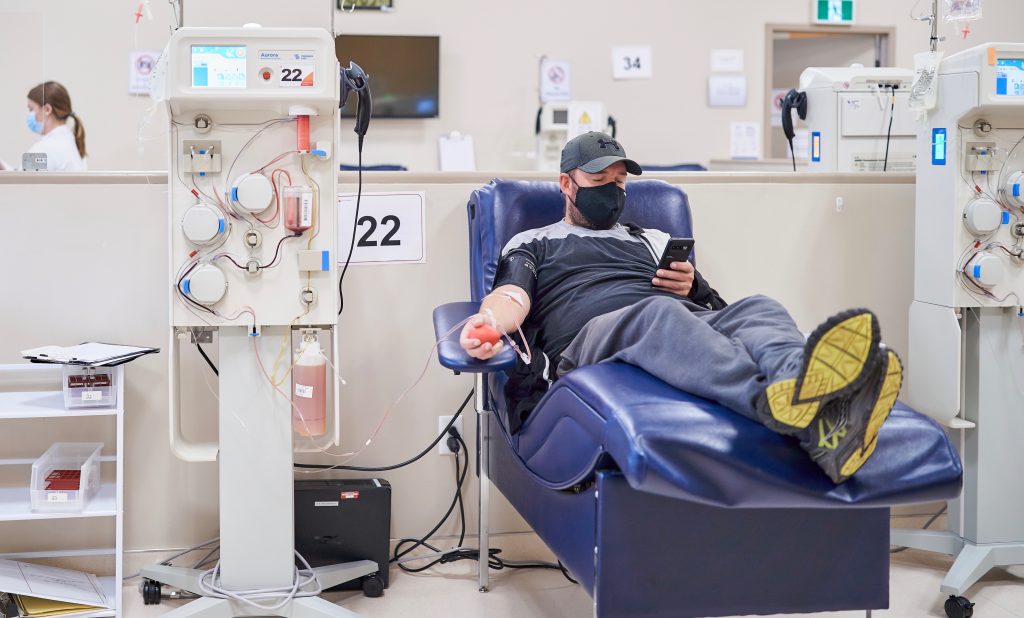How Do You Donate Plasma? A Look Into Plasmapheresis
October 21, 2021

Plasma donation is an amazing way to help patients in need and earn extra money, but most people are not very familiar with what it entails. Unlike blood donation, plasma donation involves the use of a specialized device known as a plasmapheresis machine. This machine is specifically used to collect plasma, a straw-coloured liquid portion of blood, and return other blood components to the body. It is because of this process that plasma donors are able to safely donate up to twice per week!
If you’d like to learn more about how plasmapheresis works, keep reading to find out.
What Is Plasmapheresis?
Plasmapheresis is the process used to collect source plasma. During this process, donors are intravenously connected to a plasmapheresis machine, which withdraws all blood components, separates plasma from other blood cells, and returns those other cells to the body. This process takes approximately 45-50 minutes to complete.
What Is The Goal of Plasmapheresis Treatment?
The goal of plasmapheresis is to separate and remove protein-rich plasma so that it can be manufactured into life-saving therapies.
Plasma is capable of treating over 80 different rare and chronic diseases. However, the patients who rely on plasma-derived treatments often need to receive them for the rest of their lives, and it can take up to 1,200 donations to treat one patient for a year. This is why continued plasma donations are so important!
What Are the Side Effects of Donating Plasma?
Just like with blood donations, there are side effects that can potentially occur when you donate plasma. These side effects may include dehydration, dizziness, fatigue, and/or bruising.
In order to minimize the potential of any side effects occurring, you can:
- Drink six to eight cups of water the day before and the day of your plasma donation.
- Refrain from consuming caffeinated and alcoholic beverages for 24 hours before your appointment.
- Eat a protein and iron-rich meal within three hours of your plasma donation appointment.
- Get a minimum of six to eight hours of sleep the night before giving plasma.
- Take the time to rest and replenish yourself with snacks and/or a drink after donating plasma.
At Canadian Plasma Resources, we’ve also recently changed the plasmapheresis devices at our centres to further ensure donor safety and minimize side effects as much as possible. With the Aurora Plasmapheresis System we are now using, your red cell loss will never be greater than 200mL while undergoing plasmapheresis. This state-of-the-art machine also has a donor display on the side panel that will conveniently tell you when to squeeze your stress ball according to your venous pressure.
Plasmapheresis is an incredible process that has made it possible for patients with rare diseases to receive the treatments they need. If you would like to help change someone else’s life for the better, book your next plasma donation appointment today!









